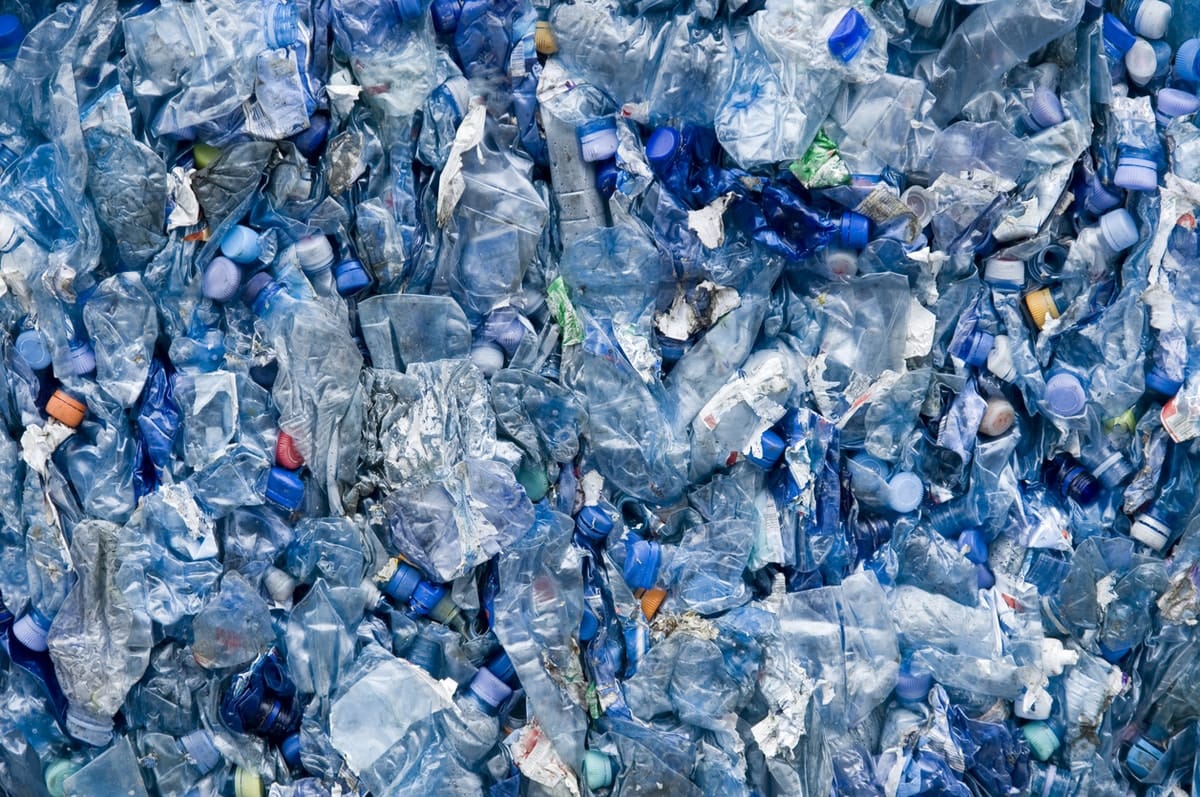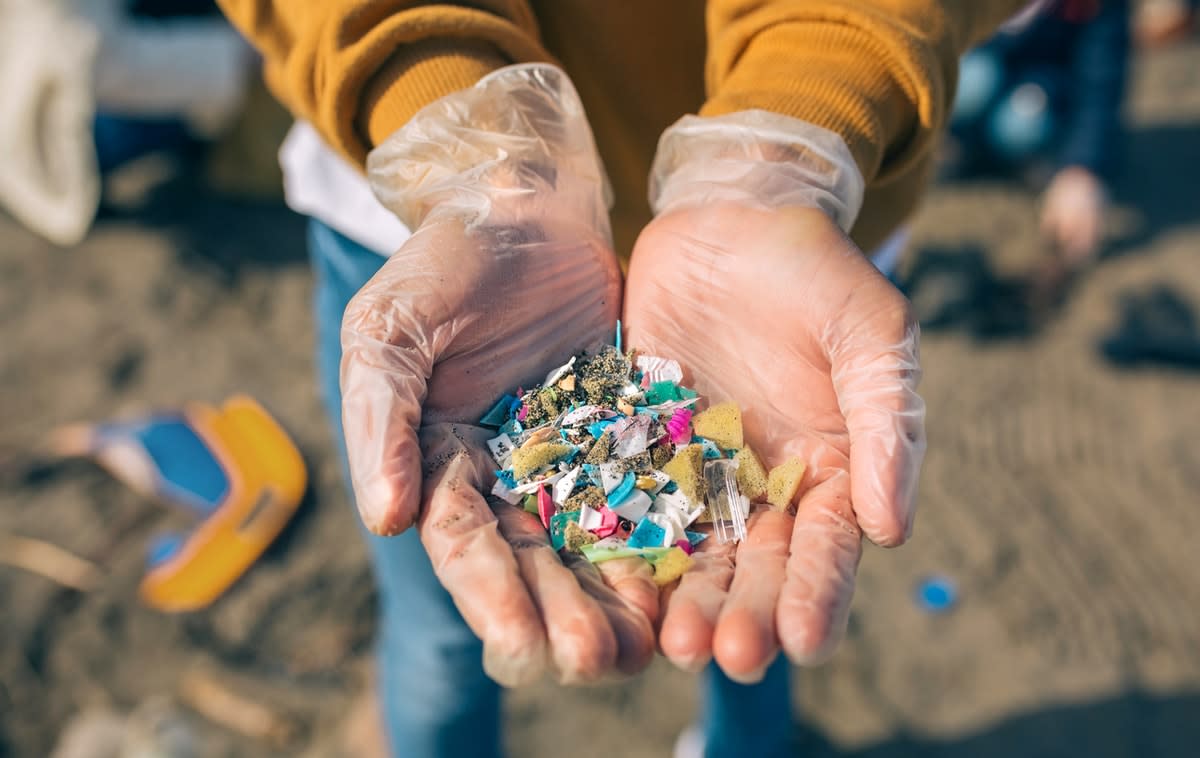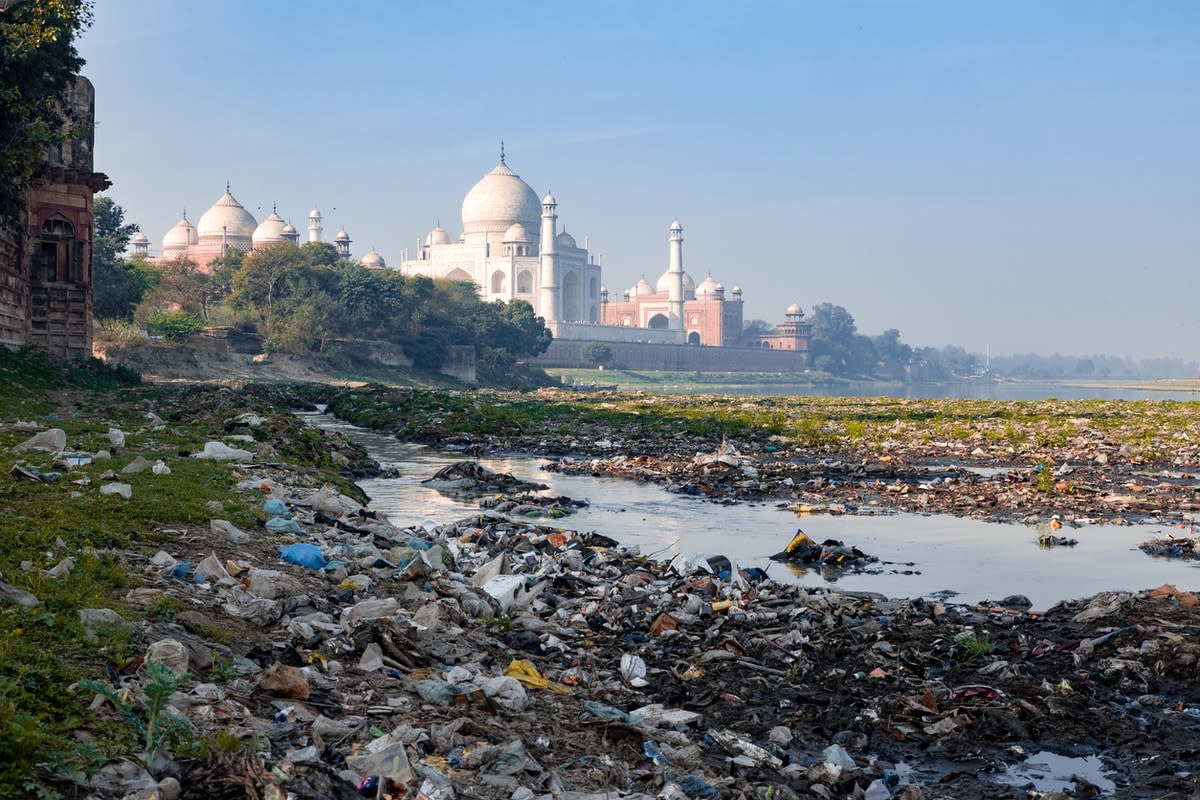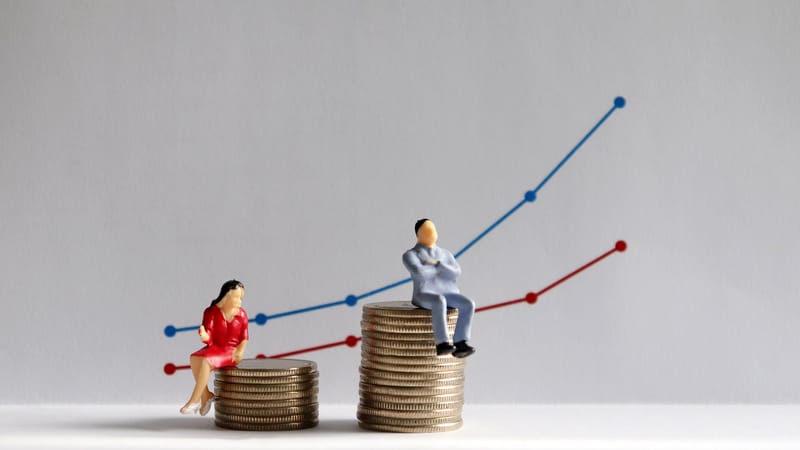
Plastic is an incredible material. It can be airtight and watertight, moulded to any shape, clear or coloured, shock-resistant, lightweight, and is chemically stable. Unfortunately, these last two features also mean plastic pollution poses a huge environmental problem.
In theory, plastic is highly recyclable. Polyethylene terephthalate (PET), typically used in drink bottles, can be recycled back into new drink bottles, or even upcycled into raincoats or clothing.
But for this to happen, the plastic waste must be clean and separated by single plastic type, which is challenging when a typical drink bottle consists of multiple plastics – the bottle cap, the label, and the bottle itself. This mixing or co-mingling of plastic means that more often than not, “recycling” becomes “downcycling”, whereby the co-mingled plastic is actually turned into a lower-value product (for example, soft plastic bags returned to a supermarket are often turned into park benches or fence posts).

This is, of course, is still a much better result than it ending up in our waterways or oceans, but given the low material grade of the downcycled product, the end result is an object ultimately destined for landfill due to its inability to be recycled further.
Another obstacle for recycling is that virgin plastic is made from oil, which means its price moves with the oil price, and when oil becomes cheap, the economics of recycling are less attractive. A volatile oil price over the past few years has made the business case for investing in recycling infrastructure and operations particularly challenging.
In landfill, plastic is relatively innocuous on a generational timeframe. On a geological timeline, however, everything underground is eventually churned to the surface, so burying it isn’t a sustainable solution for the planet.
Once plastic gets out into the biosphere, ultraviolet rays from the sun break it down into small, lightweight pieces that clog the ecological systems we depend on for clean air, water and food.
Rather than just looking for a new country in which to dump our waste, we need to rethink the services plastics provide, and how we can create systems to maintain the value of these finite materials as they move through the economy.
The most publicised challenge is the great mass of plastics accumulating in waterways and the oceans. These micro pieces are eaten by the diverse range of creatures that form the base of the global food chain, clogging their stomachs and effectively starving them on a full belly. Plastic has now become so ubiquitous in the food chain that it’s found in the most remote corners of the globe – in 90 per cent of sea bird stomachs, and in increasing concentrations in our bodies.
Just over half of this ocean plastic is thought to be leakage from land, with the balance coming from contamination directly into the ocean by way of littering, fishing nets, lost cargo from ships etc.
With their huge catchment areas, the Amazon and Niger basins are significant contributors to ocean plastic pollution. Asia, though, with 15 of the world’s 20 most polluting rivers, is the plastic pollution epicentre. This is partly due to municipal waste mismanagement.
Read more: Waste not, want not: a home-grown plan to turn plastic and tyres into fuel
However, given the Western world has been shipping its contaminated, mixed plastic waste streams to Asia for decades with the expectation that Asia would magically make the problem go away, we’ve all contributed to this pollution. Last year, China declared it would no longer be the global plastic dumping ground, providing the rest of the world with a plastic reality check.
Rather than just looking for a new country in which to dump our waste, we need to rethink the services plastics provide, and how we can create systems to maintain the value of these finite materials as they move through the economy. The Victorian government is aiming to stimulate this change through the ban on lightweight plastic shopping bags, due to come into force on 1 November.
India taking action
India, meanwhile, is taking its plastic action much further. Prime Minister Narendra Modi has announced his government is aiming to limit the consumption of single-use plastic – including bags, cups, plates, small bottles, straws and certain types of sachets – with expected restrictions on its manufacture and importation. His stated goal is to eliminate it by 2022.
The reality is that with its population density and management practices, plastic pollution isn’t just a global environmental issue; it has a direct impact on the quality of life across the country. As one of the two most populated nations on Earth, and a significant contributor to global plastic pollution, this commitment will hopefully deliver meaningful environmental benefits.

These types of bans help raise awareness of the issues and prompt individuals to rethink daily habits to reduce single-use plastic waste. Significant reductions have been measured in countries that already have “plastic bans” in place, including Ireland and China.
However, it wasn’t the ban on ozone-depleting substances alone that saved the ozone layer – it was the development of economically attractive alternatives that transformed the market.
Single-use plastics provide incredibly useful services. Storing and transporting basic needs such as food and beverages, they’ve become such a fundamental part of modern life that if we’re going to replace them, we need to find convenient and economically attractive alternatives. Further to this, if you’re a mobile food vendor, cheap and disposable packaging in which to sell your product can be fundamental to your livelihood.
Enter the “circular economy”, where products and material are maintained at their highest value, ideally in perpetuity. Biological materials (such as timber, food and soil) are managed in a regenerative cycle, where food waste is processed back into soil conditioner to sustain the system. Finite materials such as plastics and metals are designed for reuse, repair and, ultimately, economical recycling, maintaining the materials in a closed loop.
Rethink required
Solving the plastic challenge begins with rethinking the “job” we’re asking plastic to do, and how we can do it in a way that creates and retains value. For example, filing a reusable drink bottle with pristine Melbourne drinking water eliminates the energy and material value lost when we throw away single-use plastic bottles. Similarly, dining in with friends on reusable crockery is infinitely more valuable to our wellbeing than eating out of a disposal plastic container on the fly, or at your desk.
In the case of India, bringing products such as bowls and cutlery into the market that retain value after use will enable meaningful secondary markets to form – for example, collecting, cleaning and reselling those products.
As important as individual choices are, global challenges require political leadership to reshape our economic systems to enhance the human experience while protecting and regenerating the biosphere we all depend on for our quality of life and ultimate survival.
This will be explored in an upcoming Lens article, but in the meantime, political leadership is unlikely to self-emerge, especially in the current climate – it’ll be driven by individuals and communities calling for action and walking the talk.
So, although your reusable shopping bags and drink bottle aren’t going to solve the problem on their own, if enough of us show the way, the system will follow.
Find out more about this topic and study opportunities at the Graduate Study Expo





